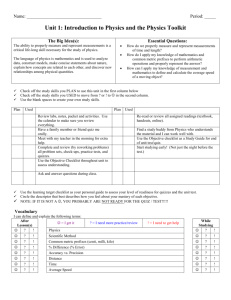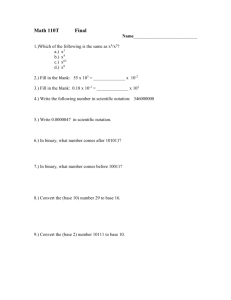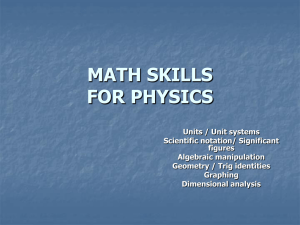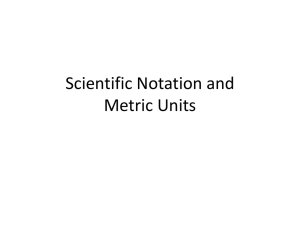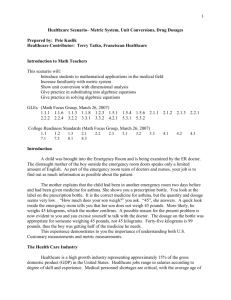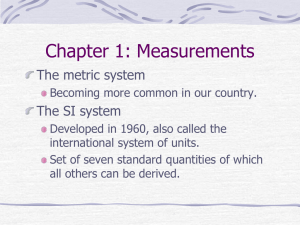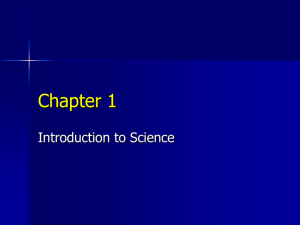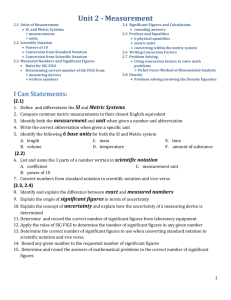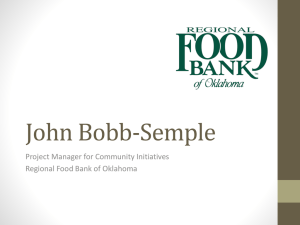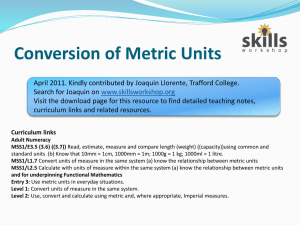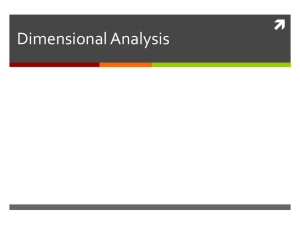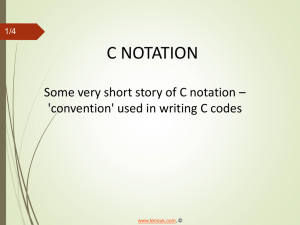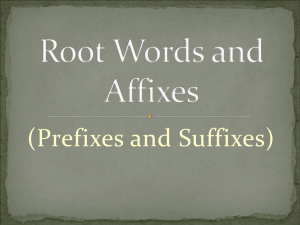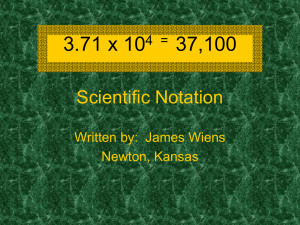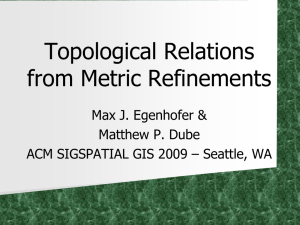File - Science Science Science
advertisement
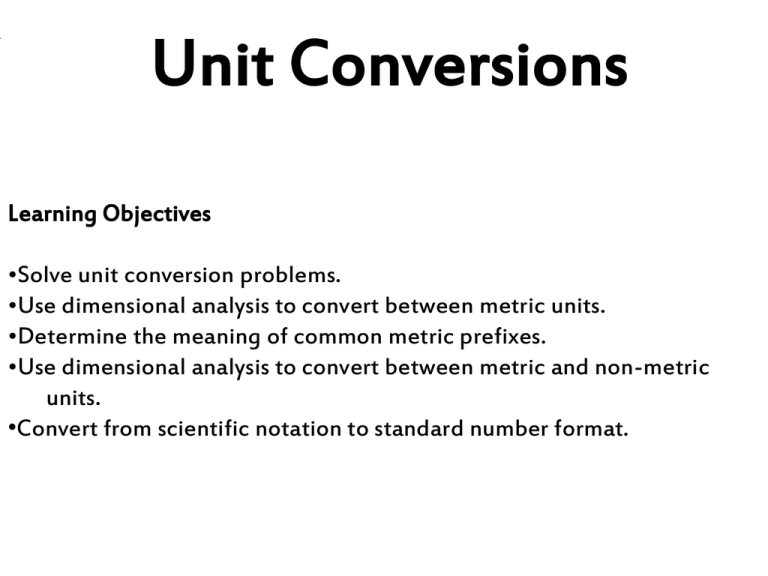
Unit Conversions Learning Objectives •Solve unit conversion problems. •Use dimensional analysis to convert between metric units. •Determine the meaning of common metric prefixes. •Use dimensional analysis to convert between metric and non-metric units. •Convert from scientific notation to standard number format. Vocabulary 1. 2. 3. 4. 5. 6. 7. base unit cancel conversion factor dimensional analysis metric system prefix scientific notation 1. Base unit – a unit in the metric system on which other units are based. > Examples: meter (m) = length gram (g) = mass liter (L) = volume (liquid) g/cm3 = volume (irregular solid) second (s) = time 2. Cancel – to cross out, remove, delete, or invalidate. > when identical terms are in the numerator & denominator, they can be cancelled: , such as the unit “seconds” in this equation: 120 seconds • 1 minute 60 seconds = 2 minutes 3. Conversion factor – a ratio or fraction = 1 that’s used to multiply/divide when converting from unit to another. > Ex: conversion factor for seconds to minutes is: 60 seconds 1 minute 4. Dimensional analysis – a technique in which cancelling units is used to obtain the correct solution to a problem. 5. Metric system – a system of base units & prefixes used in science 6. Prefix – word/symbol before a unit that multiplies that unit by a power of 10. Prefix Symbol Meaning kilo- k 1,000 hecto- h 100 UNIT 1 deci- d 1/10 centi- c 1/100 milli- m 1/1,000 micro- μ 1/1,000,000 BASE 7. Scientific notation – method of writing very large/small numbers. > consists of a number between 1 - 10 multiplied by a power of 10. > EX: 41,600,000 in scientific notation = 4.16 × 107. Today you will familiarize yourself with common conversion factors & choose from a range of conversion factor tiles in order to cancel units and solve a variety of problems. The investigation contains 4 activities: •Activity A – use dimensional analysis to solve conversion problems. •Activity B – use conversion factors to determine the meaning of metric system prefixes and solve conversion problems dealing with two unit conversions. •Activity C – use conversion factors to convert between metric and non-metric units. •Extension – convert numbers into and out of scientific notation. Before you begin… Sara lives in Toronto, Canada, while her cousin Michael lives in Detroit, Michigan. They like to compare how fast they are growing up. 1. Sara tells Michael she is 160 centimeters tall, while Michael says he is 60 inches tall. If there are 2.54 centimeters in an inch, who is taller? ? Do you have a conversion factor? YES!!! 1 inch = 2.54 cm 60 inches X 2.54 cm 1 inch = 152.4 cm Sara is taller 2. Michael tells Sara he weighs 104 pounds. Sara says she is 44 kilograms. If there are 2.2 pounds in a kilogram, who is heavier? ? Do you have a conversion factor? YES!!! 1 kg = 2.2 pounds 44 kg X 2.2 pounds 1 kg = 96.8 pounds Rounds to 97 pounds Michael is heavier
